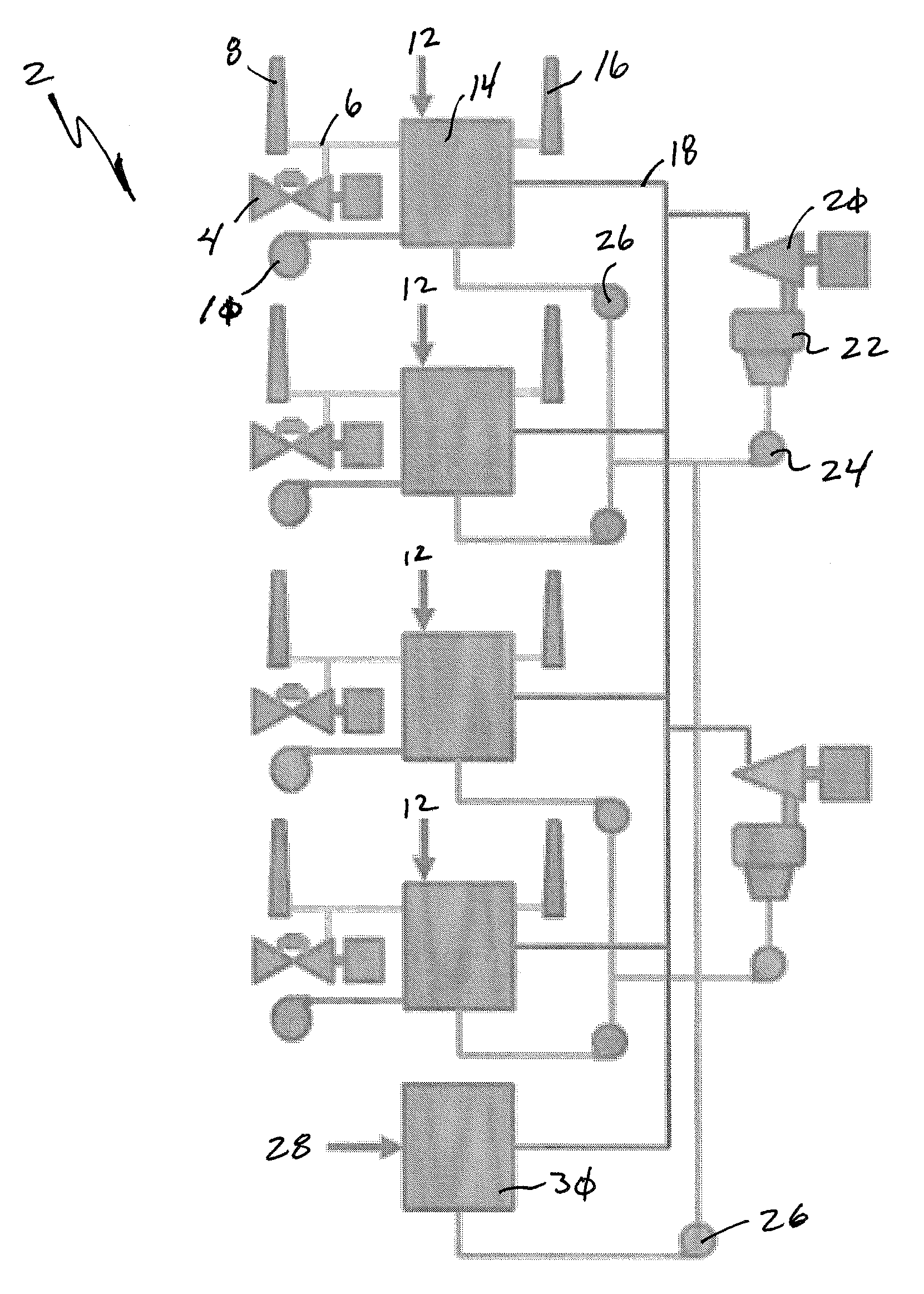Flexible energy balancing system
a technology of energy balance and flexible energy, applied in the direction of electric generator control, machines/engines, mechanical apparatus, etc., can solve the problems of inefficient systems, high cost, and time-consuming, and achieve the effects of balancing energy, constant power, and prolonged start procedur
- Summary
- Abstract
- Description
- Claims
- Application Information
AI Technical Summary
Benefits of technology
Problems solved by technology
Method used
Image
Examples
Embodiment Construction
[0032]One embodiment of the present invention is an energy balancing system that possesses fast dispatch time of gas fired simple cycle combustion turbines with the efficiency of a combined cycle system. Once the system is operating, it has the immediate capacity (i.e. spinning reserve) to respond to both up and down capacity requirements with enough flexibility to closely match the variations in wind generated power across a range of dispatch levels from minimum generation up to maximum generation. The variable output of this system will allow for more accurate dispatch orders because any capacity can be delivered (within the designed capacity range of the specific equipment configuration) instead of the “block” dispatch that results from only being able to turn simple cycle combustion turbines either off or on. To achieve this “flexible spinning reserve”, a hybrid configuration of multiple trains of equipment, with certain systems interconnected between the trains, will be require...
PUM
 Login to View More
Login to View More Abstract
Description
Claims
Application Information
 Login to View More
Login to View More - R&D
- Intellectual Property
- Life Sciences
- Materials
- Tech Scout
- Unparalleled Data Quality
- Higher Quality Content
- 60% Fewer Hallucinations
Browse by: Latest US Patents, China's latest patents, Technical Efficacy Thesaurus, Application Domain, Technology Topic, Popular Technical Reports.
© 2025 PatSnap. All rights reserved.Legal|Privacy policy|Modern Slavery Act Transparency Statement|Sitemap|About US| Contact US: help@patsnap.com


